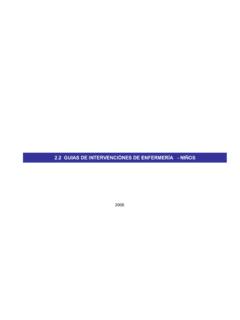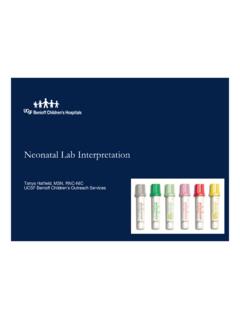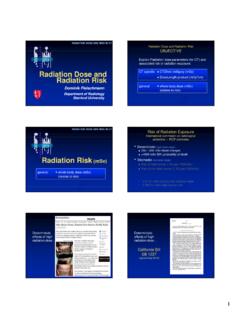Transcription of THE AMERICAN SOCIETY OF ECHOCARDIOGRAPHY …
1 1. THE AMERICAN SOCIETY OF ECHOCARDIOGRAPHY RECOMMENDATIONS FOR. CARDIAC CHAMBER QUANTIFICATION IN ADULTS: A QUICK REFERENCE GUIDE FROM. THE ASE WORKFLOW AND LAB MANAGEMENT TASK FORCE. Accurate and reproducible assessment of cardiac chamber size and function is essential for clinical care. A standardized methodology creates a common approach to the assessment of cardiac structure and function both within and between ECHOCARDIOGRAPHY labs. This facilitates better communication and improves the ability to compare results between studies as well as differentiate normal from abnormal findings in an individual patient.
2 This document summarizes key points from the 2015 ASE. Chamber Quantification Guideline and is meant to serve as quick reference for sonographers and interpreting physicians. It is designed to provide guidance on chamber quantification for adult patients; a separate ASE Guidelines document that details recommended quantification methods in the pediatric age group has also been published and should be used for patients <18 years of age (3). (1) For details of the methodology and the rationale for current recommendations, the interested reader is referred to the complete Guideline statement.
3 Figures and tables are reproduced from ASE Guidelines. (1,2). Table of Contents: 1. Left Ventricle (LV) Size and Function p. 2. a. LV Size p. 2. i. Linear Measurements p. 2. ii. Volume Measurements p. 2. iii. LV Mass Calculations p. 3. b. Left Ventricular Function Assessment p. 4. i. Global Systolic Function Parameters p. 4. ii. Regional Function p. 5. 2. Right Ventricle (RV) Size and Function p. 6. a. RV Size p. 6. b. RV Function p. 8. 3. Atria p. 10. a. Left Atrium (LA) Area and Volume Measurements p. 10. b. Right Atrium (RA) Area and Volume Measurements p.
4 12. 4. Aorta p. 13. 5. Inferior Vena Cava p. 15. 6. Appendix Normative Values p. 16. References: 1. Lang RM, Badano LP, Mor-Avi V, et al. Recommendations for cardiac chamber quantification by ECHOCARDIOGRAPHY in adults: an update from the AMERICAN SOCIETY of ECHOCARDIOGRAPHY and the European Association of Cardiovascular Imaging. J Am Soc Echocardiogr 2015;28 2. Rudski LG, Lai WW, Afilato J, et al. Guidelines for the echocardiographic assessment of the right heart in adults: a report from the AMERICAN SOCIETY of ECHOCARDIOGRAPHY . J Am Soc Echocardiogr 2010;23:685-713.
5 3. Lopez L, Colan SD, Frommelt PC, Ensing GJ, Kendall K, Younoszai AK, Lai WW, Geva T. Recommendations for quantification methods during the performance of a pediatric echocardiogram: a report from the Pediatric Measurements Writing Group of the AMERICAN SOCIETY of ECHOCARDIOGRAPHY Pediatric and Congenital Heart Disease Council. J Am Soc Echocardiogr 2010 May;23(5):465-95. Notice and Disclaimer: This report is made available by ASE as a courtesy reference source for members. This report contains recommendations only and should not be used as the sole basis to make medical practice decisions or for disciplinary action against any employee.
6 The statements and recommendations contained in this report are primarily based on the opinions of experts, rather than on scientifically verified data. ASE makes no express or implied warranties regarding the completeness or accuracy of the information in this report, including the warranty of merchantability or fitness for a particular purpose. In no event shall ASE be liable to you, your patients, or any other third parties for any decision made or action taken by you or such other parties in reliance on this information. Nor does your use of this information constitute the offering of medical advice by ASE or create any physician-patient relationship between ASE and your patients or anyone else.
7 ASE Workflow & Lab Management Taskforce: David A. Orsinelli, MD, FASE (Chair), Alicia Armour, BS, MA, RDCS, FASE, Jeanne De Cara, MD, FASE, Brian Fey, RDCS, ACS, FASE, Peter Frommelt, MD, FASE, Juan Lopez-Mattei, MD, FASE, Jane Marshall, BS, RDCS, FASE, Athena Poppas, MD, FASE, Vandana Sachdev, MD, FASE, Liza Sanchez, RCS, FASE, and Timothy Woods, MD, FASE, Columbus, Ohio; Durham, North Carolina; Chicago, Illinois;. Milwaukee, Wisconsin; Houston, Texas; Boston, Massachusetts; Providence, Rhode Island; Bethesda, Maryland; Memphis, Tennessee.
8 July 2018. 2. LEFT VENTRICLE (LV) SIZE AND FUNCTION. (For full recommendation refer to the Chamber Quantification Guideline p. 3-16). LV Size Linear Measurements LVID Diastole (LVIDD). Inner edge to inner edge, perpendicular to the long axis of the LV, at or immediately below the level of the mitral valve leaflet tips. Perform at end-diastole (defined as the first frame after mitral valve closure or the frame with the largest LV dimensions/volume.) Each laboratory should choose one method for consistency. LVID Systole (LVIDS). Inner edge to inner edge, perpendicular to the long axis of the LV, at or immediately below the level of the mitral valve leaflet tips.
9 Perform at end-systole (defined as either as the frame after aortic valve closure or the smallest LV dimension/volume.) Each laboratory should choose one method for consistency. LV Volume Measurement 2D Methods Preferred technique is Biplane Method of Discs (modified Simpson's rule). See ASE 2015 chamber quantification document for the alternative area-length technique. Measured from the apical 4- and 2-chamber views (preferably an LV. focused view) tracing the endocardial blood pool interface (between the compacted myocardium and the cavity) at end-diastole and end- systole on images with clear endocardial border definition.
10 Papillary muscles should be excluded from the cavity tracing. Maximize LV area and avoid foreshortening. When approaching the MV plane, the contour is closed by connecting the two opposite sections of the MV ring with a straight line. The LV length is the bisector between this line and the apical point of the LV contour distant from it. Endocardial Border Enhancement When 2 contiguous endocardial segments cannot be visualized in the apical views, contrast should be used. If employed, the contrast-enhanced images should be used for Biplane tracing o Avoid acoustic shadowing in the basal segments of the LV.
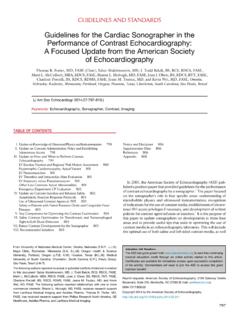
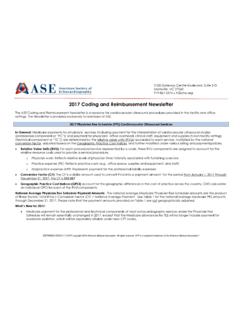
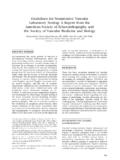
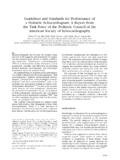
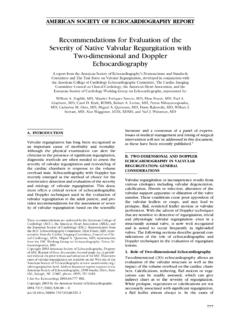
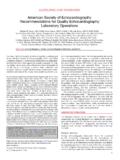
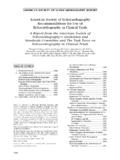
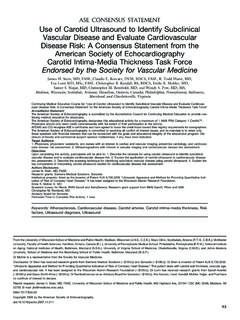
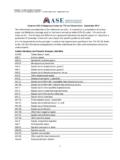
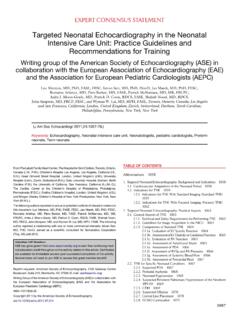

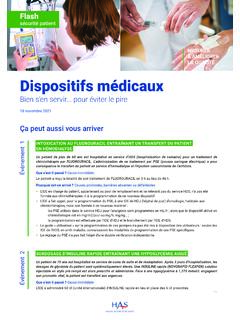
![Ventilator Lecture 1.ppt [Read-Only] - Harvard University](/cache/preview/3/a/1/6/e/2/e/d/thumb-3a16e2ed28f74bd29d4f745139ced6d0.jpg)
